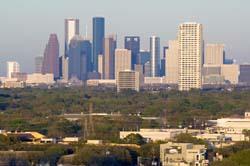Advance Participation
The Advance Program offers an opportunity for states, tribes, and local governments to work in partnership with EPA and each other within a framework that can help focus participants' efforts to keep their air clean. Participating areas work with EPA to quickly evaluate, select, and implement control measures and programs. EPA can point to available tools and resources that may be used to resolve air quality issues, provide technical advice, disseminate information about available funding opportunities, and offer other support.
 Participation in Advance is not a guarantee of an eventual attainment designation under a new or revised standard, or that future air quality violations will be avoided. In addition, there are no guarantees that every measure and program undertaken within Advance would receive SIP "credit." EPA will not provide prior approval of measures/programs for eventual SIP purposes as part of Advance. We expect, however, that early reductions can generally be accounted for either (1) within an eventual SIP baseline, with regard to reductions achieved before the baseline year, or (2) as a control measure (to the extent the measure is quantifiable, surplus (in terms of not being double counted both as part of the baseline and as a control measure in the SIP), federally enforceable, and permanent and meets any other applicable requirements), with regard to reductions achieved after the baseline year. Also, it is always possible for a state to adopt measures into a SIP before it is subject to any planning requirements.
Participation in Advance is not a guarantee of an eventual attainment designation under a new or revised standard, or that future air quality violations will be avoided. In addition, there are no guarantees that every measure and program undertaken within Advance would receive SIP "credit." EPA will not provide prior approval of measures/programs for eventual SIP purposes as part of Advance. We expect, however, that early reductions can generally be accounted for either (1) within an eventual SIP baseline, with regard to reductions achieved before the baseline year, or (2) as a control measure (to the extent the measure is quantifiable, surplus (in terms of not being double counted both as part of the baseline and as a control measure in the SIP), federally enforceable, and permanent and meets any other applicable requirements), with regard to reductions achieved after the baseline year. Also, it is always possible for a state to adopt measures into a SIP before it is subject to any planning requirements.
Sign-Up Letter
To participate in the Advance Program, an area should submit a brief sign-up letter that expresses a willingness to coordinate with EPA, state, tribal and/or local stakeholders to quickly implement measures to reduce ozone, and address each of the program eligibility criteria. You do not need to identify specific measures in your sign-up letter, although you are welcome to highlight existing measures and programs. The letter should be signed by state, Tribal and/or local officials with the authority to implement the program and assist in leveraging staff and program funds as needed. A sample sign-up letter is available for your reference.
The sign-up letter should be sent via email to the EPA Office of Air Quality Planning and Standards (OAQPS) at ADVANCE@epa.gov. You can also send it via FedEx/UPS to:
Advance Program
c/o Rich Damberg
U.S. Environmental Protection Agency
Office of Air Quality Planning and Standards, C539-01
109 T. W. Alexander Drive
Research Triangle Park, NC 27709
919-541-5592
EPA will review the letter to determine that the program eligibility requirements have been met. The area will be contacted by e-mail or letter about acceptance into the program.
Path Forward
EPA recommends that an area commit to the program for 5-years with an option to renew. The area will develop a path forward that fully describes the planned measures and/or programs and provide a schedule for the implementation of each one. Significant actions that are necessary or may affect implementation, such as required reviews/approvals and acquisition of equipment, can be included in the schedule.
In addition to the basic elements in a path forward (description of measures and schedules), EPA suggests that participants consider additionally including information such as:
- a brief description of what ozone or PM is and associated health and environmental effects,
- what the Advance Program is and why you are participating,
- current status of the area's air quality issues including recent monitoring information and design value trends,
- any technical analyses undertaken by the area, such as modeling to understand the area's emission sources and appropriate controls,
- the key sources of ozone and PM2.5 (and precursor pollutants) per National Emissions Inventory information or other more refined local information,
- a summary of past or ongoing measures and programs in the area that have helped to reduce ozone or PM, and
- provisions for public and stakeholder involvement.
These additional pieces of information are not a requirement for participation in Advance. However, they help to more fully describe the air quality issue and what is being done about it, such that the path forward can better serve as a blueprint in working toward stakeholder consensus and as a focal point for public recognition of local efforts to clean the air.
Implementation
Participants should begin to implement the path forward as quickly as possible. Areas should evaluate voluntary and mandatory control options and implement them - to the extent possible - immediately following development of the path forward. Periodic status updates should be provided to describe the area's measures and programs, current air quality, stakeholder meetings/events, and any other information the area would like to highlight.
Areas seeking funding should visit www.grants.gov. This site enables organizations to find and apply to over 1,000 competitive grant opportunities offered by the 26 Federal grant-making agencies, some of which may be useful in the context of this program.
